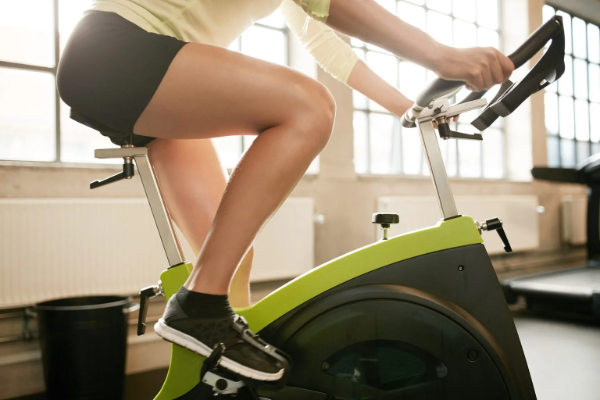Maintaining knee health is crucial for overall mobility and quality of life. Both cycling and walking are popular forms of exercise that offer numerous health benefits. However, people often wonder which activity is better for their knees. This article delves into the details of cycling and walking, examining their impact on knee health, the mechanics of each exercise, and the advantages and disadvantages of both activities.
The Anatomy of the Knee
To understand the effects of cycling and walking on the knees, it’s essential to have a basic understanding of knee anatomy. The knee is a complex joint that connects the thigh bone (femur) to the shin bone (tibia). It includes the following key components:
- Bones: The femur, tibia, and kneecap (patella).
- Cartilage: The meniscus and articular cartilage cushion the bones.
- Ligaments: The anterior cruciate ligament (ACL), posterior cruciate ligament (PCL), medial collateral ligament (MCL), and lateral collateral ligament (LCL) provide stability.
- Tendons: These connect muscles to bones and help in movement.
- Muscles: The quadriceps and hamstrings support knee function.
The Mechanics of Walking
Walking is a low-impact aerobic exercise that most people can do without special equipment. The mechanics of walking involve a series of coordinated movements:
- Heel Strike: The heel of the leading foot touches the ground.
- Foot Flat: The foot moves from heel strike to being flat on the ground.
- Mid-Stance: The body weight shifts over the leading foot.
- Heel Off: The heel lifts off the ground.
- Toe Off: The toes push off the ground, propelling the body forward.
- Swing Phase: The trailing foot swings forward to become the leading foot.
Impact on Knees
Walking is generally easy on the knees because it involves smooth, controlled movements. However, the impact force with each step is about 1.5 times your body weight. This impact is usually well-tolerated by healthy knees, but it can be problematic for individuals with knee issues.
See Also: How to Stand Up on a Paddle Board with Bad Knees
The Mechanics of Cycling
Cycling is a low-impact exercise performed on a bicycle. The mechanics of cycling involve:
- Pedal Stroke: The circular motion of the pedals.
- Leg Movement: The legs move in a continuous, repetitive cycle.
- Muscle Engagement: The quadriceps, hamstrings, calves, and glutes work together.
- Joint Movement: The knee joint moves through a range of motion without significant impact.
Impact on Knees
Cycling is considered knee-friendly because it reduces the load on the joints. The smooth, repetitive motion helps to strengthen the muscles around the knee without the high impact of weight-bearing exercises.
Comparing the Benefits of Walking and Cycling
Walking Benefits
- Accessibility: Walking requires no special equipment and can be done anywhere.
- Weight Management: It helps burn calories and manage weight.
- Bone Health: Weight-bearing activity promotes bone density.
- Mental Health: Walking can reduce stress and improve mood.
- Cardiovascular Health: Regular walking improves heart health.
Cycling Benefits
- Low Impact: Cycling places less stress on the knees and joints.
- Muscle Strength: It builds strength in the legs and lower body.
- Endurance: Improves cardiovascular endurance and stamina.
- Flexibility: Enhances joint flexibility and range of motion.
- Mental Health: Like walking, cycling can reduce stress and improve mood.
Risks and Drawbacks
Walking Risks
- Impact Stress: Repeated impact can exacerbate knee issues in some individuals.
- Overuse Injuries: Excessive walking can lead to overuse injuries like shin splints.
- Environmental Factors: Uneven surfaces can increase the risk of falls and injuries.
Cycling Risks
- Repetitive Strain: Long periods of cycling can lead to repetitive strain injuries.
- Posture Issues: Poor bike fit or posture can cause knee pain and other issues.
- Equipment Dependence: Cycling requires a bicycle and suitable terrain.
Scientific Studies on Knee Health
Walking Studies
Several studies have examined the impact of walking on knee health. Research generally supports the idea that moderate walking is beneficial for maintaining knee function and reducing the risk of osteoarthritis. However, high-impact walking, like power walking or walking on hard surfaces, can increase the risk of knee problems.
Cycling Studies
Studies on cycling indicate that it is a safe and effective exercise for people with knee issues. Cycling can improve joint function, reduce pain, and enhance the overall quality of life for individuals with knee osteoarthritis. The low-impact nature of cycling makes it suitable for long-term knee health.
Recommendations for Knee Health
For Walking
- Proper Footwear: Wear supportive shoes to reduce impact.
- Surface Choice: Walk on softer surfaces like grass or dirt paths.
- Pace Control: Maintain a moderate pace to minimize stress on the knees.
- Warm-Up: Stretch and warm up before walking to prepare the muscles.
For Cycling
- Bike Fit: Ensure your bike is properly fitted to your body.
- Seat Position: Adjust the seat height to avoid knee strain.
- Pedal Cadence: Maintain a steady, moderate pedal cadence.
- Variety: Include different terrains and intensities in your cycling routine.
Conclusion
Both cycling and walking offer significant health benefits and can be good for your knees when done correctly. Walking is accessible and beneficial for bone health and weight management, but it can stress the knees if not done properly. Cycling is low-impact and excellent for building muscle strength and endurance, but it requires proper equipment and fit. Ultimately, the best choice depends on your individual health, preferences, and knee condition. Incorporating both activities into your routine can provide a balanced approach to maintaining knee health and overall fitness.

